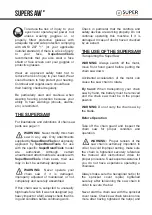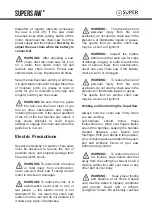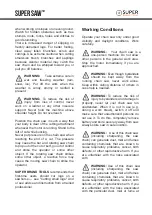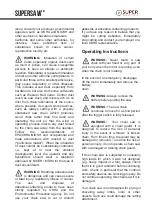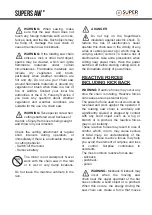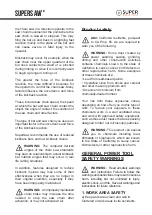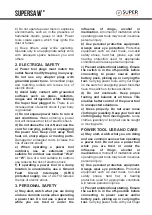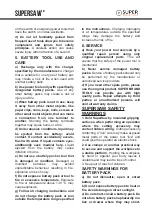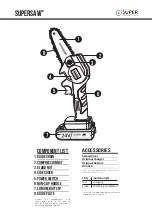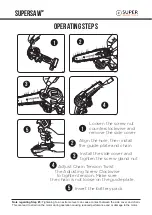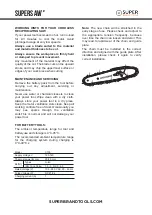
SUPERSAW
TM
for future reference.
u) Use only the battery pack in the
application for which it was intended.
v) Remove the battery pack from the
equipment when not in use.
w) Dispose of properly.
circuit each other or be short-circuited
by other metal objects.
When battery pack is not in use, keep it
away from other metal objects, like paper
clips, coins, keys, nails, screws or other
small metal objects, that can make a
connection from one terminal to another.
Shorting the battery terminals together may
cause burns or fire.
i) Keep battery pack out of the reach of
children.
j) Seek medical advice immediately if a
cell or battery has been swallowed.
k) Always purchase the battery pack
recommended by the device
manufacturer for the equipment.
l) Keep battery pack clean and dry.
m) Wipe the battery pack terminals with
a clean dry cloth if they become dirty.
n) Battery pack need to be charged
before use. Always use the correct
charger and refer to the manufacturer’s
instructions or equipment manual for
proper charging instructions.
o) Do not leave battery pack on
prolonged charge when not in use.
p) After extended periods of storage, it
may be necessary to charge and
discharge the battery pack several times
to obtain maximum performance.
q) Battery pack gives its best
performance when it is operated at
normal room temperature (20 °C ± 5 °C).
r) When disposing of battery packs,
keep battery packs of different
electrochemical systems separate from
each other.
s) Recharge only with the original
charger. Do not use any charger other
than that specifically provided for use
with the equipment.
A charger that is
suitable for one type of battery pack may
create a risk of fire when used with another
battery pack.
t) Retain the original product literature


